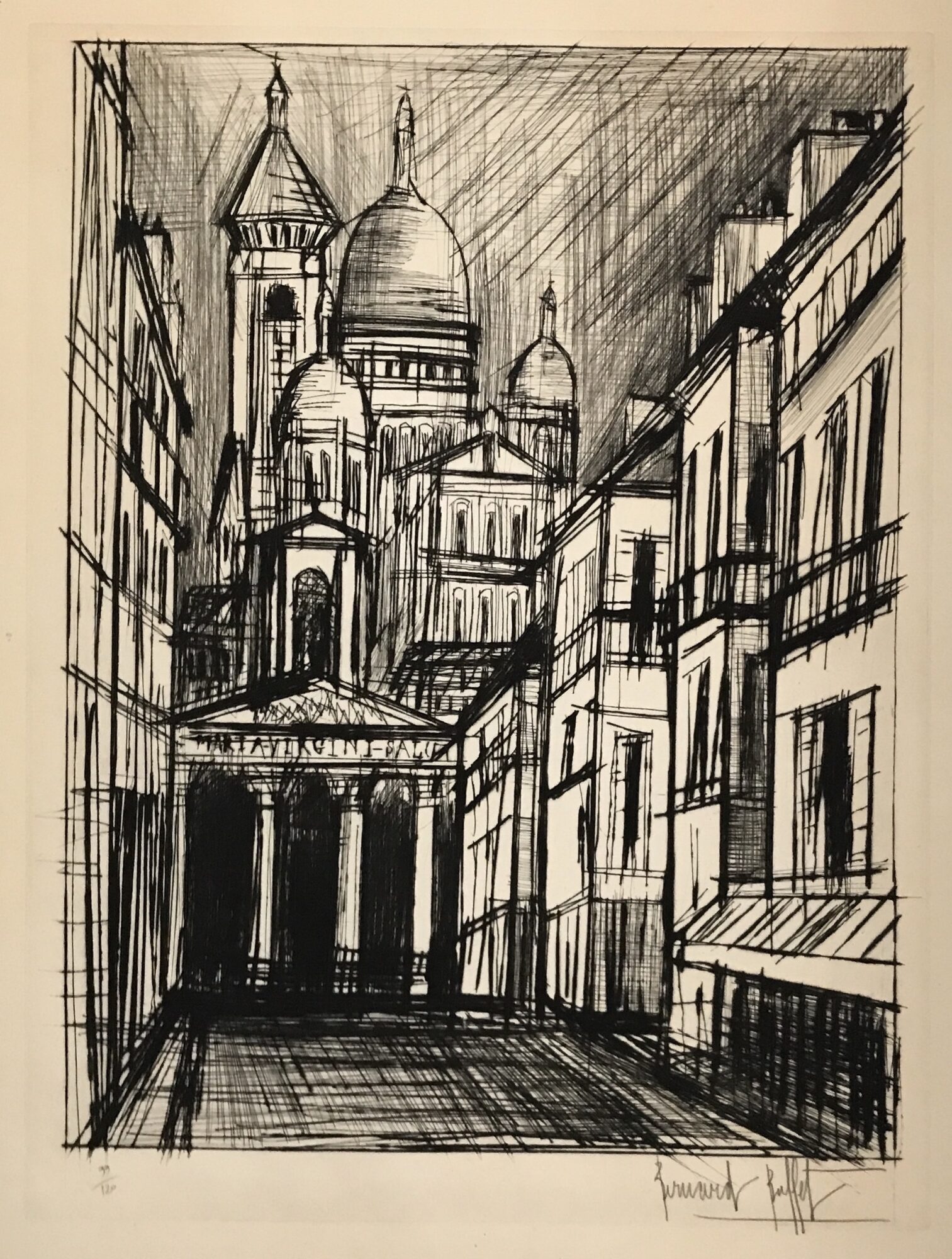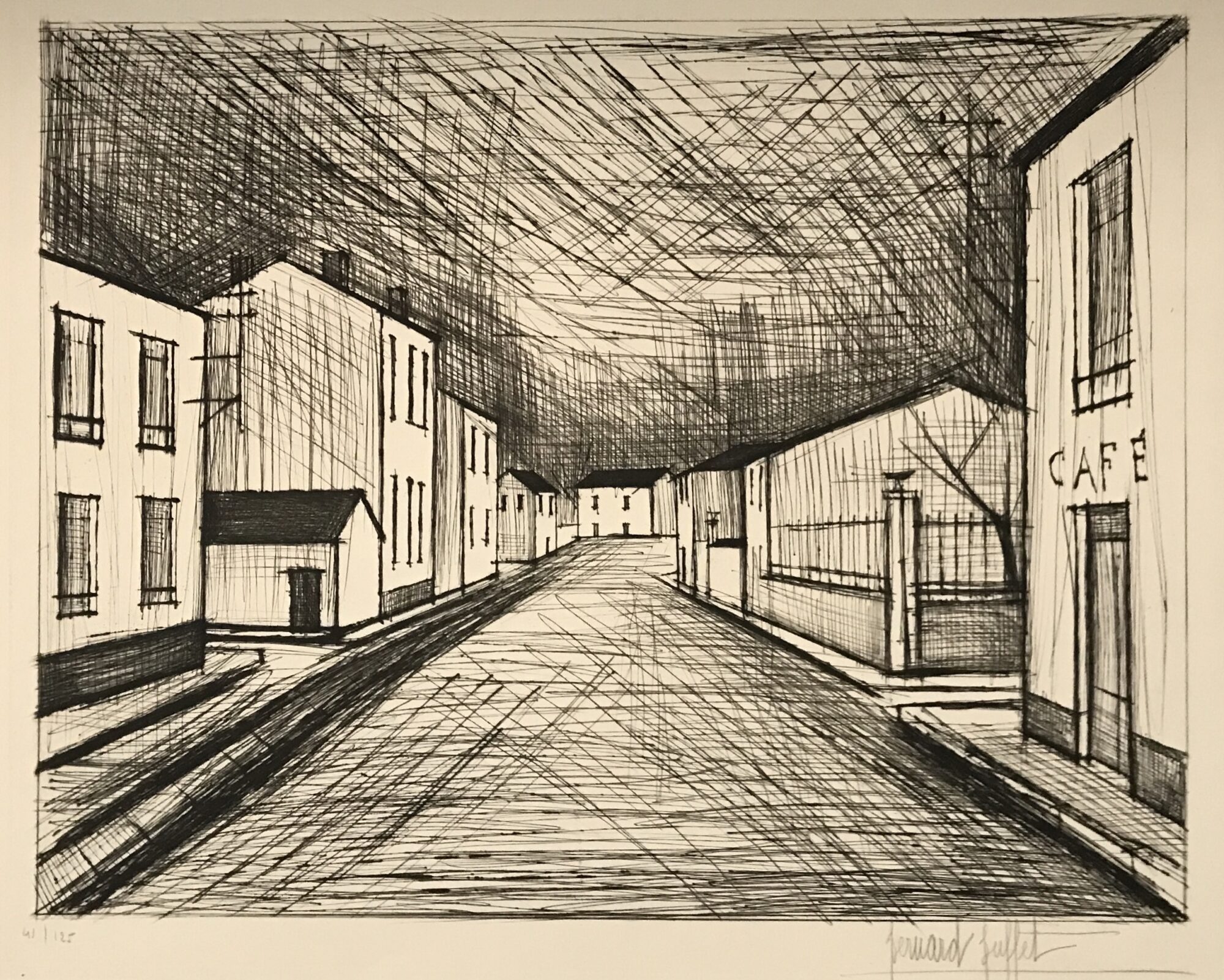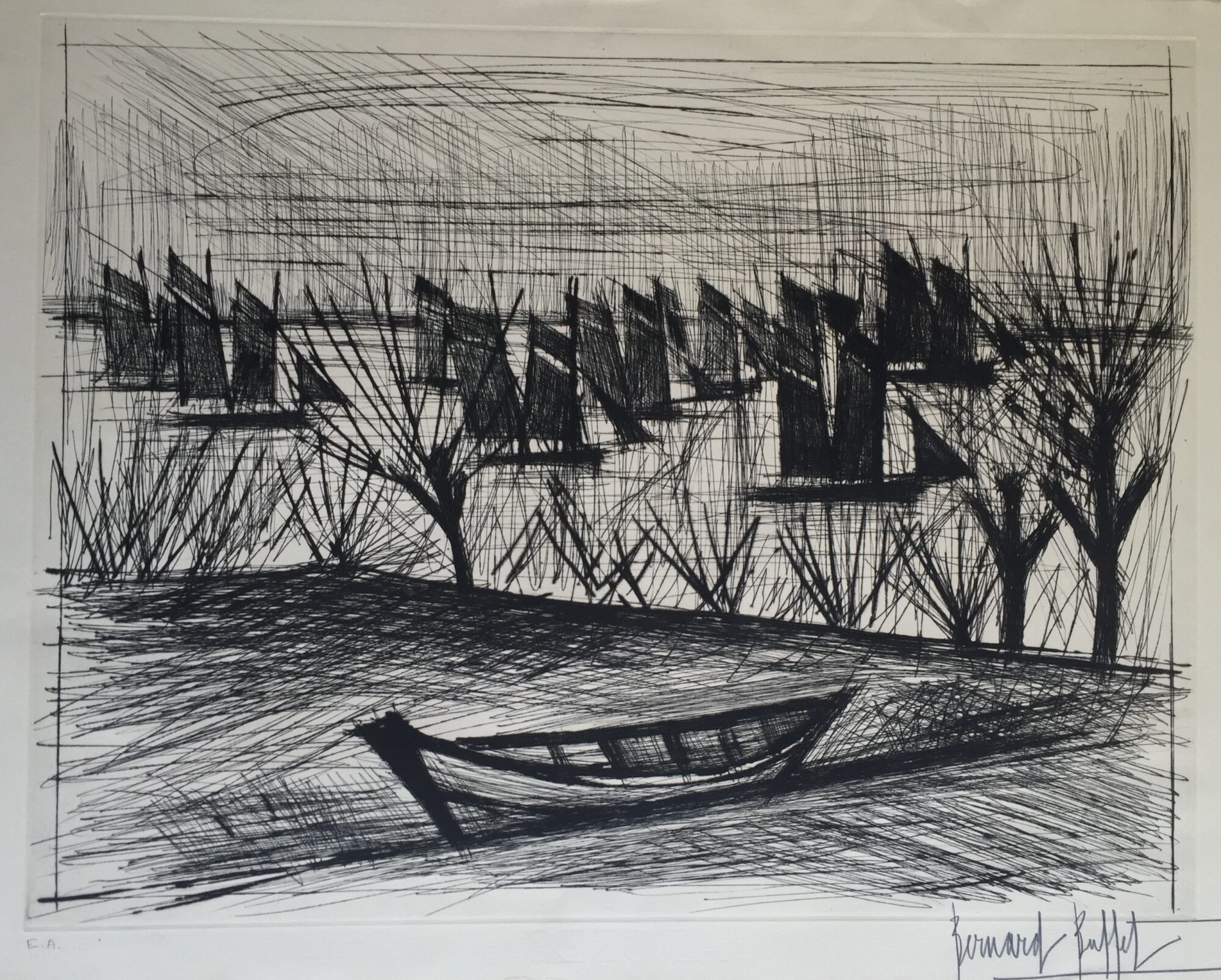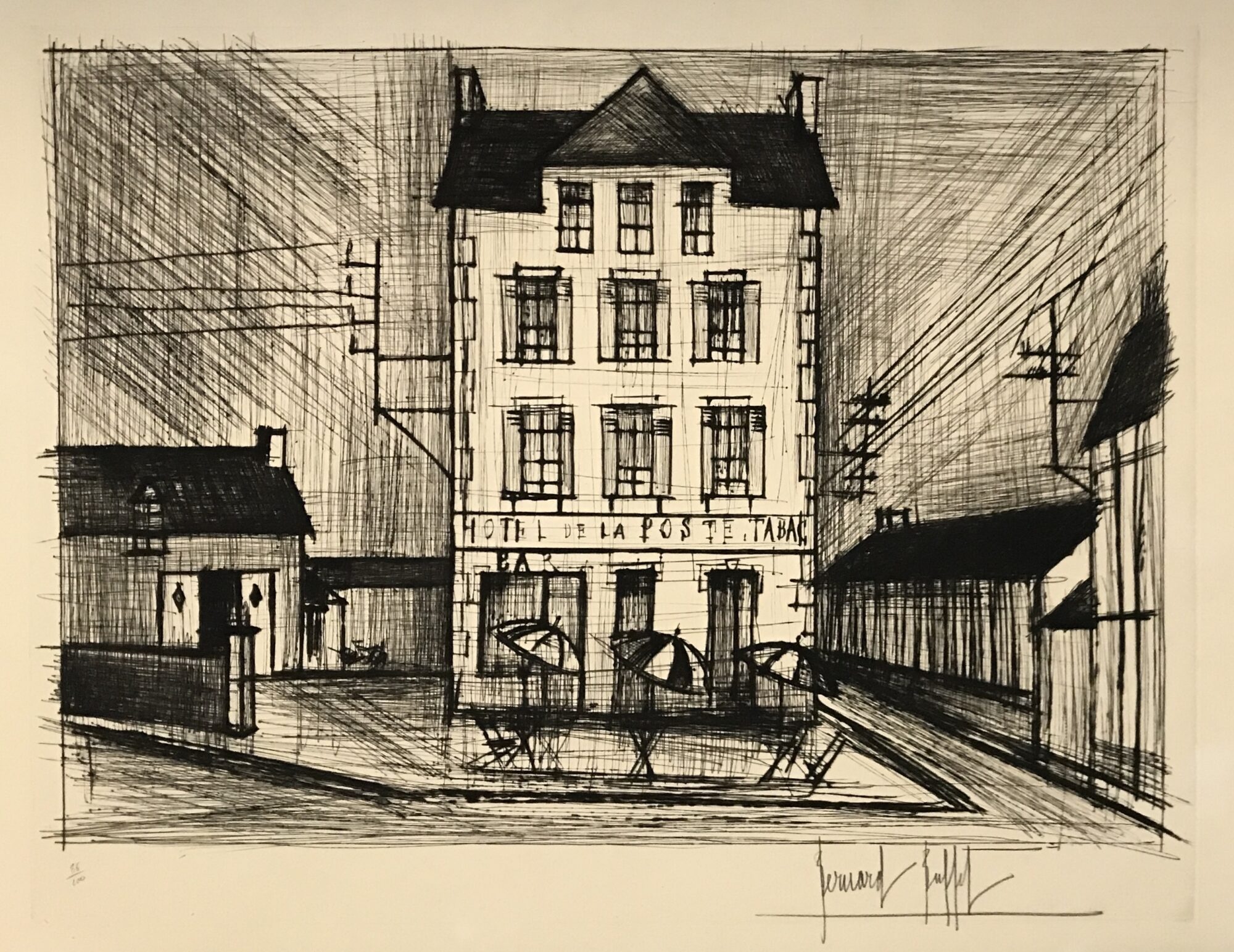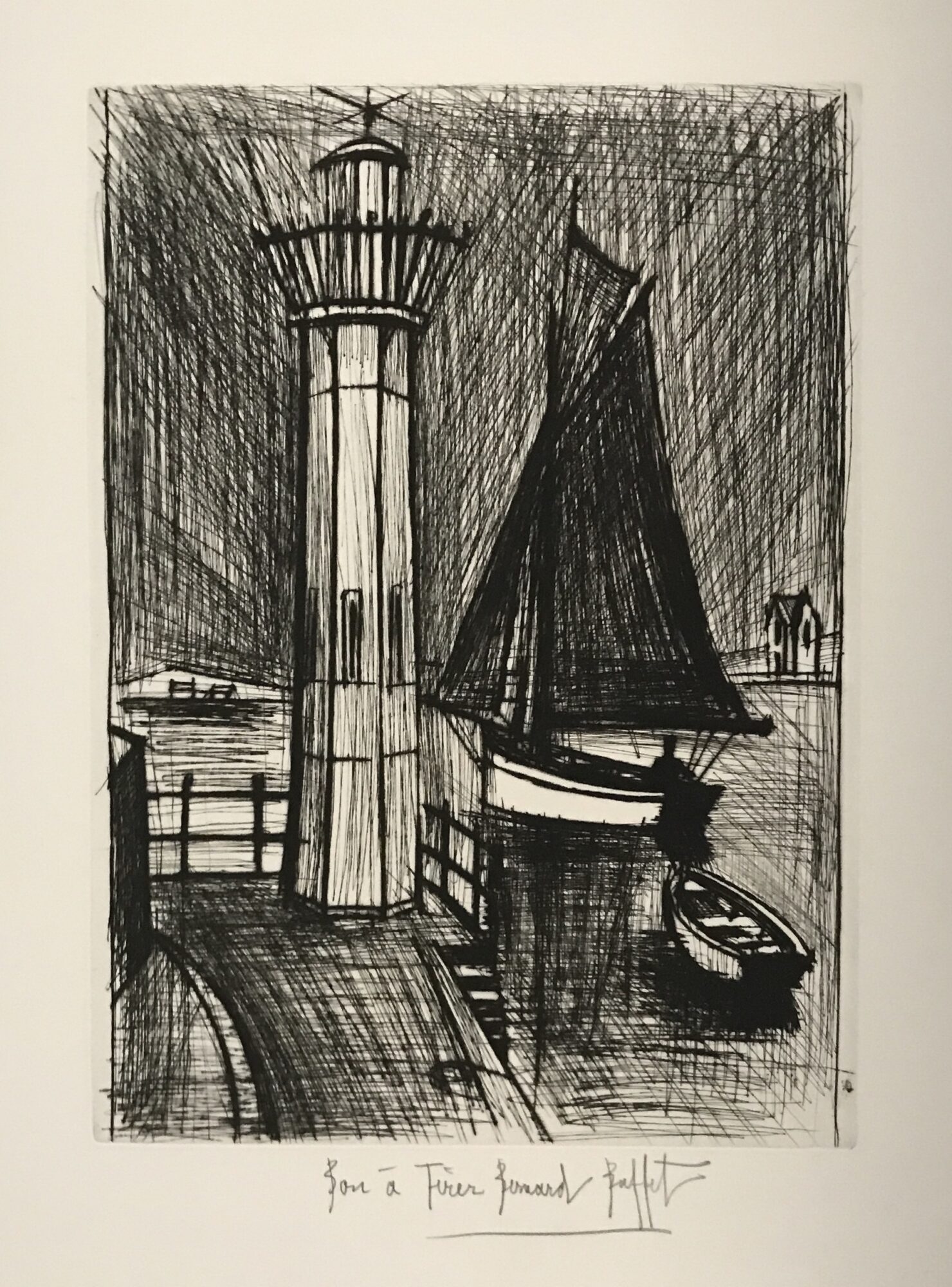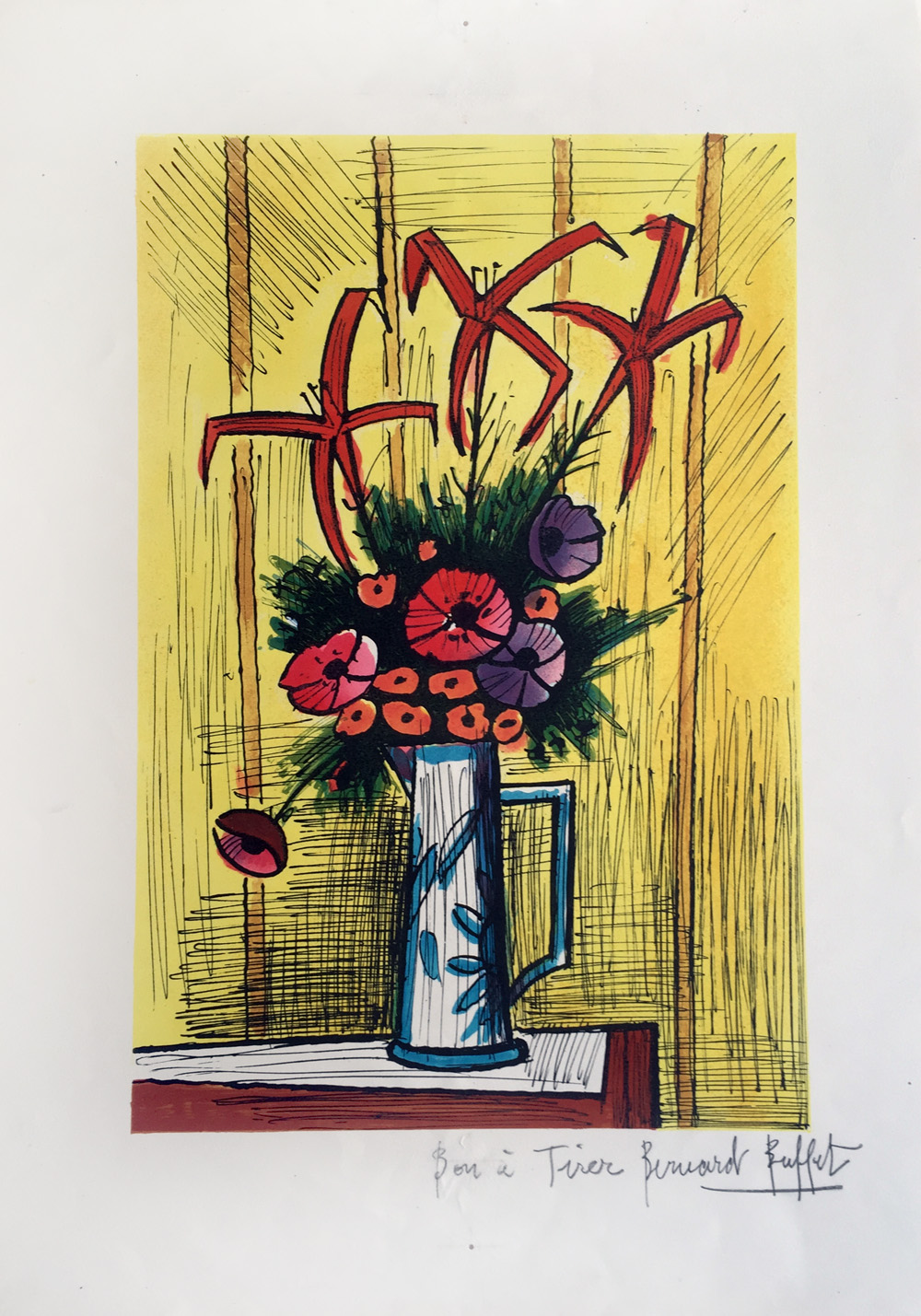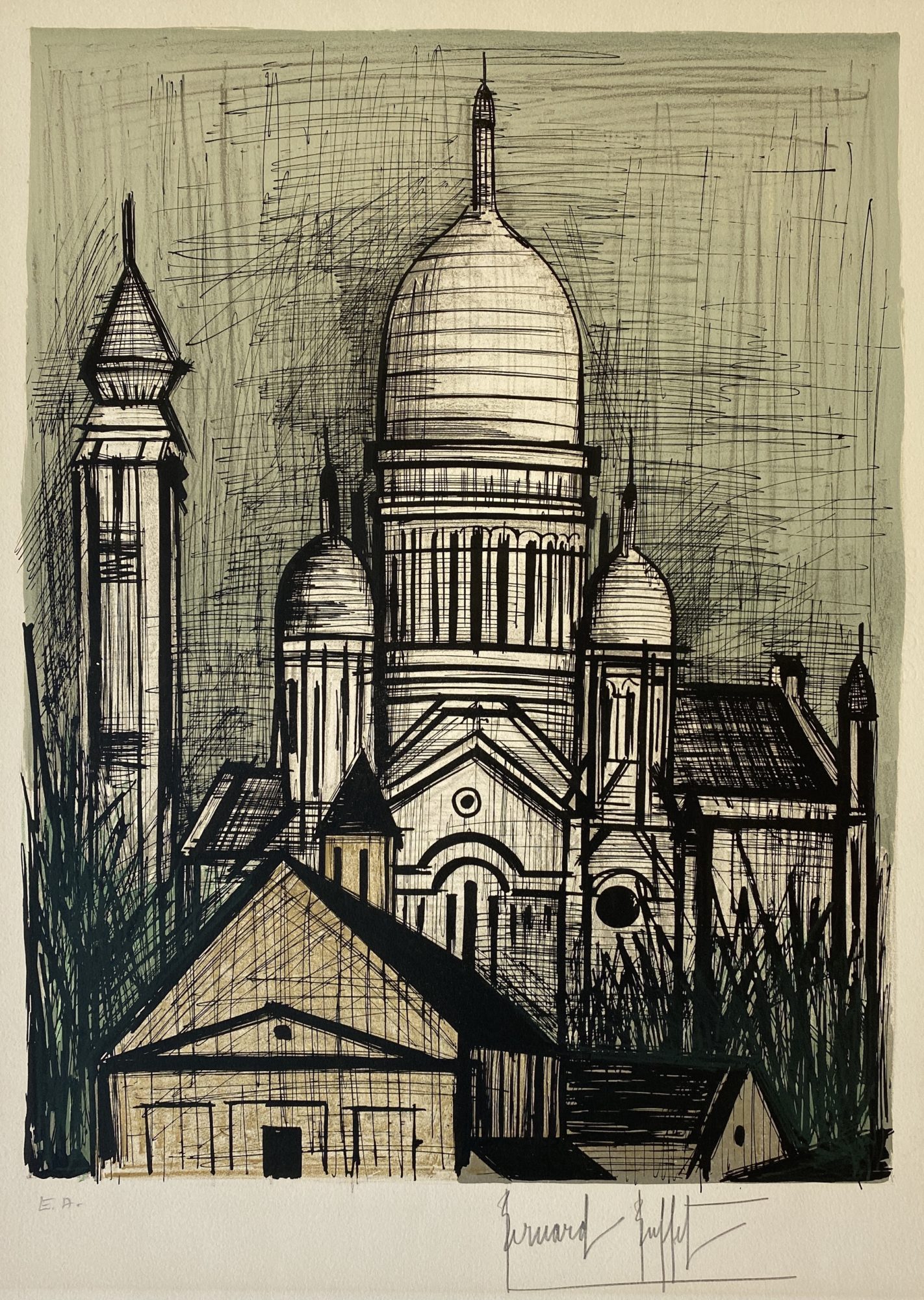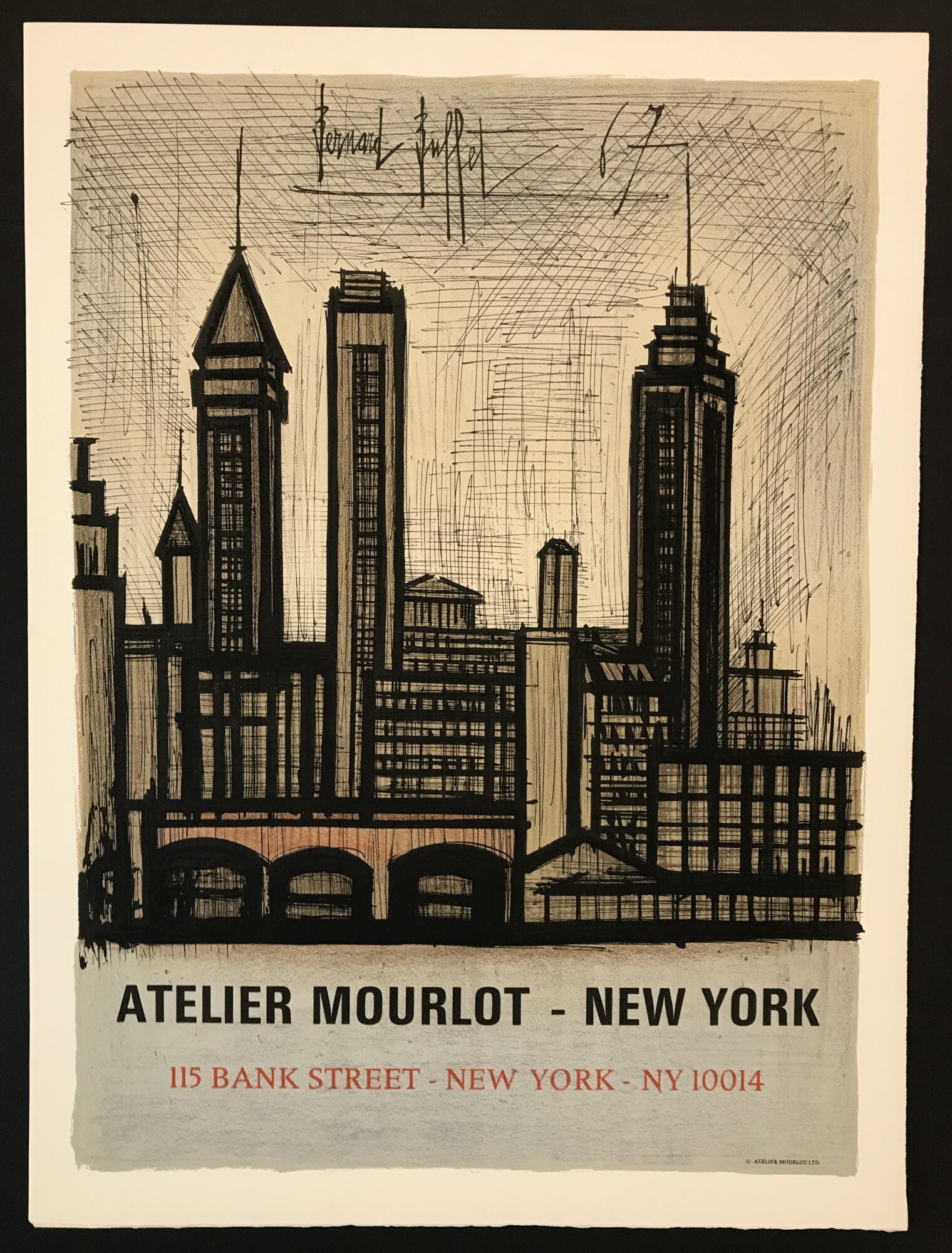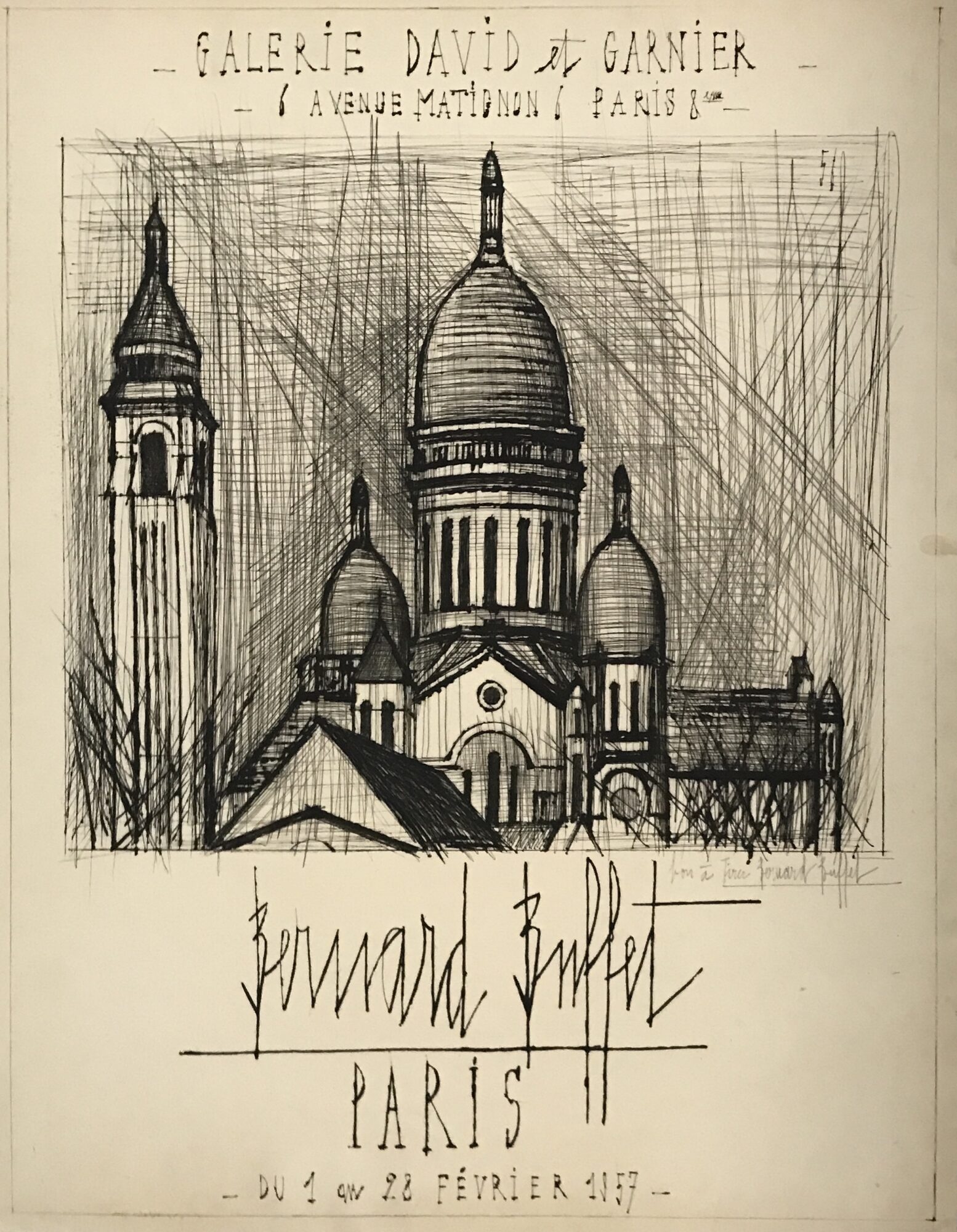Bernard Buffet – Notre Dame de Lorette et Le Sacre Coeur
Bernard Buffet, Notre Dame de Lorette et Le Sacre Coeur is an original drypoint engraving. This print is signed on the lower right margin of the work and numbered on the lower left corner. Printed by Atelier Lacouriere et Frelaut. Rheims 64.
Notre Dame de Lorette et Le Sacre Coeur is defined by “dry” straight lines revealing the shape of buildings and bodies. His works show elongated, emaciated figures and structures and lend a feeling of despair and loneliness. Buffet shows Paris itself, traditionally portrayed as lively and colorful, in a hard and lifeless manner.
Born in Paris in 1928, Buffet came of age under the Nazi occupation. He studied at the École des Beaux-Arts, and by the age of 19 had had his first solo show. Buffet’s was an austere vision of the world that chimed perfectly with the atmosphere of post-war alienation championed by the fashionable existentialist philosophy of Jean-Paul Sartre. It earned him immediate popular acclaim and in 1948, at the age of 20, he was awarded the prestigious Prix de la Critique. Ten years later, now a highly renowned artist, he was hailed by The New York Times Magazine as one of ‘France’s Fabulous Young Five’, together with Françoise Sagan, Yves Saint Laurent, Roger Vadim and Brigitte Bardot.
| Title | Notre Dame de Lorette et Le Sacre Coeur |
|---|---|
| Medium | Engraving |
| Year | 1968 |
| Edition | 120 |
| Catalogue Raisonné | Rheims 64 |
| Signature | Signed |
| Size | 29 x 22 (in) 74 x 56 (cm) |
| Price | Price on Request |
Description
Bernard Buffet, Notre Dame de Lorette et Le Sacre Coeur is an original drypoint engraving. This print is signed on the lower right margin of the work and numbered on the lower left corner. Printed by Atelier Lacouriere et Frelaut. Rheims 64.
Notre Dame de Lorette et Le Sacre Coeur is defined by “dry” straight lines revealing the shape of buildings and bodies. His works show elongated, emaciated figures and structures and lend a feeling of despair and loneliness. Buffet shows Paris itself, traditionally portrayed as lively and colorful, in a hard and lifeless manner.
Born in Paris in 1928, Buffet came of age under the Nazi occupation. He studied at the École des Beaux-Arts, and by the age of 19 had had his first solo show. Buffet’s was an austere vision of the world that chimed perfectly with the atmosphere of post-war alienation championed by the fashionable existentialist philosophy of Jean-Paul Sartre. It earned him immediate popular acclaim and in 1948, at the age of 20, he was awarded the prestigious Prix de la Critique. Ten years later, now a highly renowned artist, he was hailed by The New York Times Magazine as one of ‘France’s Fabulous Young Five’, together with Françoise Sagan, Yves Saint Laurent, Roger Vadim and Brigitte Bardot.
Buffet had an extremely prolific career, painting over 8,000 works and garnering widespread popularity and acclaim, including dozens of international exhibitions and honors such as being inducted into the Académie des Beaux-Arts in 1974. Born in Paris, France on July 10, 1928, the artist took his own life after a prolonged battle with Parkinson’s disease on October 4, 1999 in Tourtour, France at the age of 71.
Best known for his representational work, Buffet’s paintings are often figurative, graphic, and central in their compositions. A bold rejecter of abstract art altogether, Buffet was a member of the anti-abstraction group L’homme Témoin, or the Witness-Man, which passionately argued for the importance of representational art at a time when abstraction began to dominate the critical conversation.
Additional information
| Title | Notre Dame de Lorette et Le Sacre Coeur |
|---|---|
| Medium | Engraving |
| Year | 1968 |
| Edition | 120 |
| Catalogue Raisonné | Rheims 64 |
| Signature | Signed |
| Size | 29 x 22 (in) 74 x 56 (cm) |
| Price | Price on Request |


